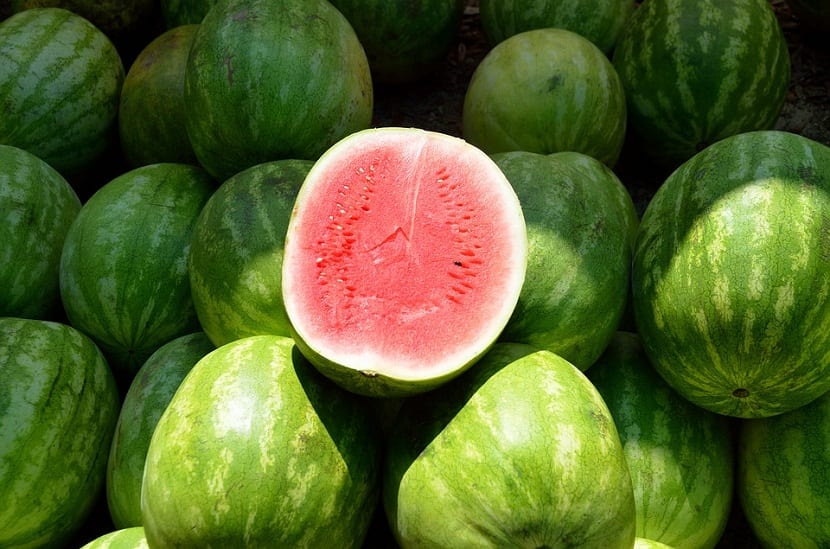
Watermelon or Citrullus lanatus As its scientific name indicates, it is a plant of the climbing or creeping class. It comes from the Cucurbit family, the watermelon plant being very similar to the pumpkin plant.
Watermelon has long been said to come from Africa, however the exactness of the location is still unknown. The cultivation of this plant dates back approximately 4 thousand years and today it is grown anywhere in the world.
Key features
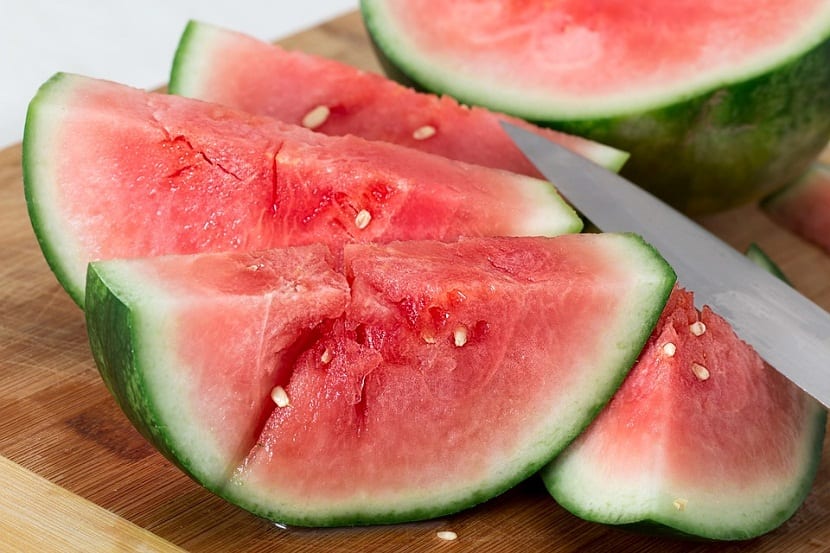
Watermelon is quite a fleshy fruit and when it is in the perfect stage of ripening, can contain up to 90% water. The main characteristics that we can find both in the plant and in its fruit we will see below:
- Watermelon has shallow, branching roots, its most important root can be divided into what is known as primary roots and these are also divided again. The main root grows much more than the secondary ones.
- The stem is usually herbaceous and in turn has a cylindrical shape, being able to get to measure about three meters.
- It has many hairs that are slanted, these are fine and very tiny and shine like silk. Because it is a rather fragile plant, this usually crawls on the ground until it completes its development.
- The leaves are divided into sections and in most cases has three lobes. It also has tiny hairs just like its stem and they are 6 to 20 centimeters long.
- The flowers are yellow and they are usually somewhat separate. They can be both female and male even being on the same floor.
- As for its fruit, the watermelon or water melon as it is also known in some regions, it is shaped like a large berryOn the outside they are usually green in color while inside, their pulp is red or light pink with a fairly sweet flavor. It has a large number of seeds inside which are of different sizes, its shape is ovoid and at the same time crushed and its color is variable, they can be white, yellow or black.
Watermelon properties
Watermelon is not only one of the most refreshing fruits that exist, it also has a large number of properties which are very beneficial for our body and it is for this reason that many nutritionists They call it the fruit that is good for everything.
According to the different studies that have been carried out, this fruit is perfect to recover energy, for heart health, for weight loss, vision, skin and for our kidneys, it is also ideal for athletes. It is for this reason that it is recommended that watermelon always be present in our daily diet.
The pin, another of the names by which it knows watermelon, contains 90% water, due to this many people use it as a supplement for weight loss, but this is not all, it is also rich in vitamins, minerals, and fiber, very essential for the proper functioning of our body.
In addition to this, the water melon contains antioxidants such as beta carotene, lycopene and also citrulline, these components are increased if the watermelon is well ripe.
Main benefits of watermelon
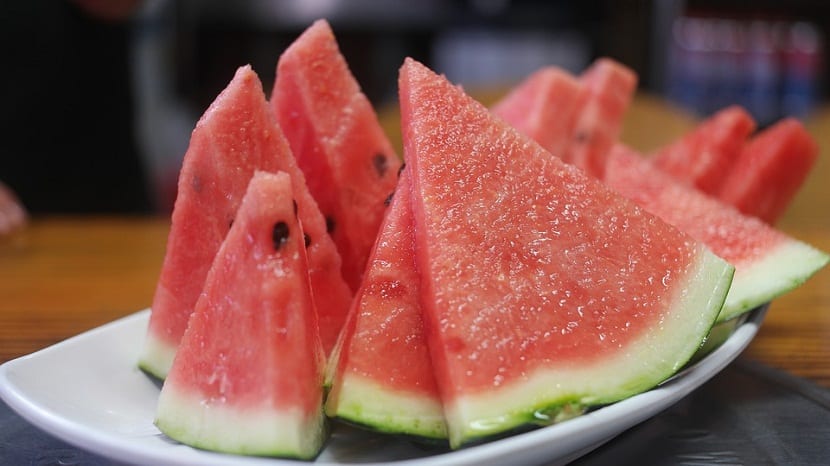
Rejuvenates the skin
Antioxidants are very important especially if we want keep the health of our skin intact and especially younger.
Watermelon can help us with that as it is very rich in antioxidants. This fruit is ideal for keeping the skin tissue in an optimal state and also to prevent the effects of aging.
The amount of watermelon that we have to consume daily to maintain our younger and brighter skin it is approximately 100 grams.
The reason why watermelon is perfect for our complexion is thanks to its high lycopene content which reduces by 40% the danger of suffering skin injuries due to strong exposure to sunlight.
Prevents cardiovascular diseases
Watermelon has a substance known as citrulline, which is very beneficial to maintain a adequate flexibility in blood vessels. In the same way, it prevents plaque from accumulating in both arteries and veins, thus preventing a possible heart attack. In addition to citrulline, it also contains arginine, which in combination with the former maintains the proper functioning of blood flow and cardiovascular activity.
Intensifies sexual activity
It may sound a bit peculiar, but this fruit has almost the same effect that a viagra pill has.
Citrulline plays a very important role in this and it is because this component enlarges and at the same time makes the blood vessels remain in a state of relaxation just like Viagra. Many people use watermelon to eliminate problems such as erectile dysfunction.
Excellent supplement for weight loss
This fruit does not contain fat at all and also, for every 100 grams consumed it contributes to the body a minimum of 30 calories, however, watermelon is high in vitamins, minerals and also antioxidants very necessary for the good health of the organism.
It also acts as natural diureticTherefore, we will eliminate a large amount of toxins in our body and at the same time we will reduce the inflation that occurs with the retention of fluids.
Decrease exhaustion
After a hard day at work or after leaving the gym, our muscles often accumulate lactic acid and ammonia. Watermelon helps the muscles to regain their energy and at the same time they can relax and thanks to its potassium content it strengthens both our nervous and muscular systems.
In addition to all these benefits, watermelon is also very good at preventing some types of cancer, improves the organs of sight, eliminates toxins from the bladder and kidneys, is perfect for cases of constipation, increases our energy up to 25% and also reduces chronic swelling.
Watermelon cultivation
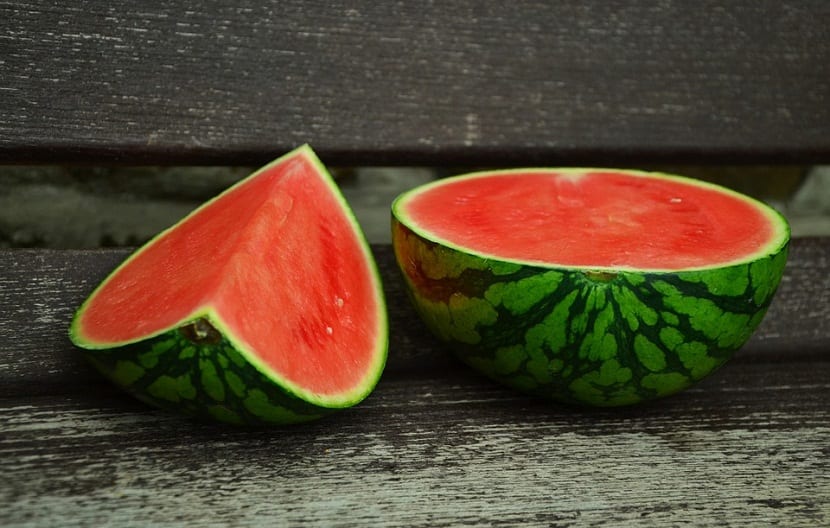
Because watermelon is one of the many tropical fruits that exist, it develops preferably at temperatures between 23 and 28 degreesAlthough it supports temperatures much lower than these, they should never exceed 11 degrees, because if that happens then its growth process will stop.
For this reason it is that the optimal season for the cultivation of water melon It is after the coldest months of the year have passed, knowing this the perfect season to grow watermelons is during spring.
The sowing of this fruit does not require many demands, prefers very well drained soils and that also contain a lot of organic matter. Before starting the cultivation process, we must take into account the distance that each of these future plants will have, since the most appropriate way is making rows about five feet apart per meter and a half of separation between each floor.
In case we are going to plant it inside a pot, it is very important to remember that They need enough space for their roots to develop properly. Another recommendation is that long before starting the cultivation, the soil where we are going to plant the watermelon seed is removed to eliminate weeds and a certain amount of fertilizer is added.
To place the seeds we only have to dig 3 or 4 holes on the ground that are approximately 1 inch and later we are going to put a seed in each of these holes.
Watermelon watering
After growing the watermelon, we must be very attentive to the moment when the plants begin to bloom, since after this process we must begin to water them every three days only if we observe that the flowers are dry. This flowering process will indicate that from that moment the watermelon plant does not need so much water.
Diseases and pests
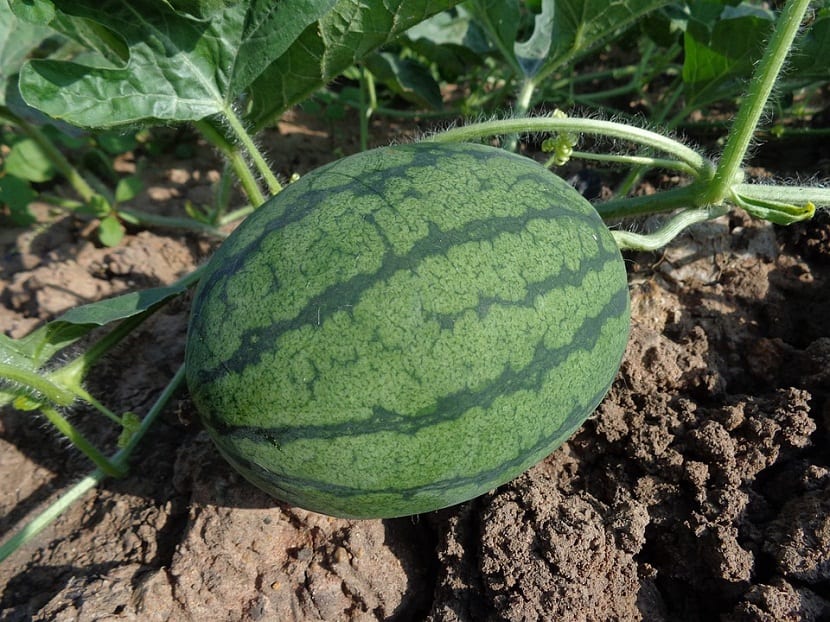
In the same way that occurs with other species that belong to the Cucurbit family, the most important enemies when it comes to planting watermelon are the following:
Gummy canker on the stem: this disease can be appreciated due to the appearance of beige lesions on the stem, these cause gummy secretions very close to the area where the lesion is located.
Diseases in the vessels: these appear in two different types and they cause the leaves of the plant to turn yellowish and in turn wilt more quickly.
Cucurbit ash or powdery mildew: this disease causes the appearance of white spots on the leaves.
Thrips: this pest causes foliar necrosis in the plant.
Aphid: This pest usually spreads during the spring and fall.
Whitefly: this species of fly that depletes the plant after removing all its nutrients.
Red spider: it is a kind of mite that grows on the leaves of the plant caused that it loses its color and also produces yellow spots.
WITHOUT KNOWING I GOT UP A WATERMELON PLANT IN A POT AND IT WAS NOT EVEN 30 CM IN DIAMETER AND IT GAVE ME A WELL-ROUND WATERMELON I MAKE WATER AND PUT ORGANIC COMPOST IN ADDITION TO GROUND EGG SHELLS CHEMICAL) WHAT ELSE CAN YOU RECOMMEND ME SINCE I'M VERY EXCITED WITH MY "UNEXPECTED GUEST". THANKS I AM FROM GUAYAQUIL ECUADOR.
Hello Fernando.
With what you are doing, it is enough for me to give you new watermelons 🙂
A greeting.